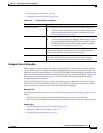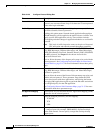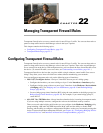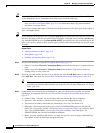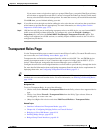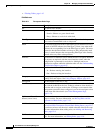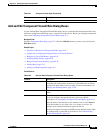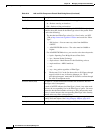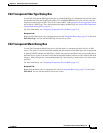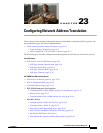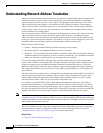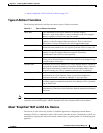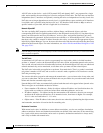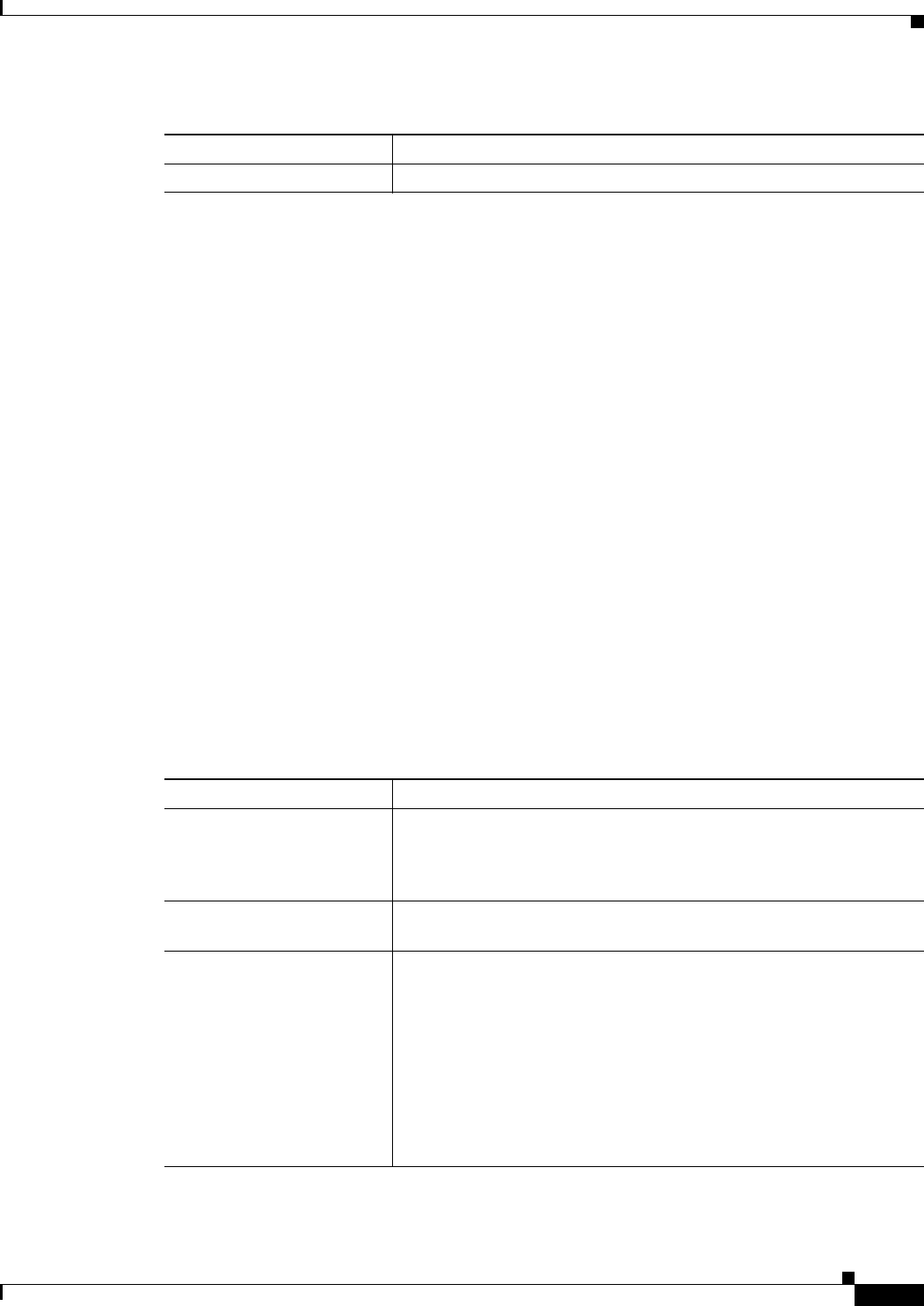
22-5
User Guide for Cisco Security Manager 4.4
OL-28826-01
Chapter 22 Managing Transparent Firewall Rules
Transparent Rules Page
Add and Edit Transparent Firewall Rule Dialog Boxes
Use the Add and Edit Transparent Firewall Rule dialog boxes to add and edit transparent firewall rules,
which are configured as EtherType access control lists on the device. Before you configure transparent
rules, read Configuring Transparent Firewall Rules, page 22-1.
Navigation Path
From the Transparent Rules Page, page 22-3, click the Add Row button or select a row and click the
Edit Row button.
Related Topics
• Interfaces in Routed and Transparent Modes, page 45-4.
• Chapter 46, “Configuring Bridging Policies on Firewall Devices”
• Bridging on Cisco IOS Routers, page 60-18
• Defining Bridge Groups, page 60-19
• Bridge-Group Virtual Interfaces, page 60-18
• Editing Rules, page 12-9
• Adding and Removing Rules, page 12-9
Field Reference
Delete Row button Click this button to delete the selected rule.
Table 22-1 Transparent Rules Page (Continued)
Element Description
Table 22-2 Add and Edit Transparent Firewall Rule Dialog Boxes
Element Description
Enable Rule Whether to enable the rule, which means the rule becomes active when
you deploy the configuration to the device. Disabled rules are shown
overlain with hash marks in the rule table. For more information, see
Enabling and Disabling Rules, page 12-20.
Action Whether the rule permits or denies traffic based on the conditions you
define.
Interfaces The interfaces or interface roles to which the rule is assigned. You must
select only bridged, transparent interfaces (for more specific
information, see Configuring Transparent Firewall Rules, page 22-1).
Enter the name of the interface or the interface role, or click Select to
select the interface or role from a list, or to create a new role. An
interface must already be defined to appear on the list.
Interface role objects are replaced with the actual interface names when
the configuration is generated for each device. See Understanding
Interface Role Objects, page 6-67.



